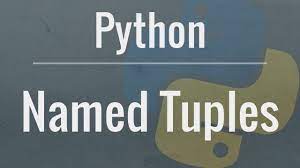Python Named Tuple Example: Definition, Purpose, and Advantages

A Python Named Tuple is a subclass of tuples with named fields, enhancing code readability by allowing access through field names rather than indices. It combines the simplicity of tuples with the clarity of dictionaries, providing a lightweight and immutable data structure.
Named Tuples offers a self-documenting approach, making code more expressive and maintainable. They are particularly advantageous in scenarios requiring structured, easily understandable data representation, avoiding the ambiguity associated with numeric indices in regular tuples. The named fields contribute to code readability, making Named Tuples a concise and efficient choice for representing structured data in Python programs.
Understanding Named Tuples: Definition, Purpose, and Advantages
1. Definition and Purpose of Named Tuples:
A Named Tuple in Python is a subclass of tuples that have named fields, providing a more descriptive and readable way to work with structured data. Unlike regular tuples, where elements are accessed by index, named tuples allow you to access elements by their names (attributes). Named Tuples are defined using the namedtuple function from the collections module.
Purpose:
- Enhanced Readability: Named Tuples are designed to improve the clarity and readability of code by assigning meaningful names to tuple elements. Instead of accessing elements using numeric indices, developers can use more expressive field names.
- Structured Data: Named Tuples are particularly useful when dealing with data structures that have a fixed set of fields, such as representing a point in 2D space with x and y coordinates. Named Tuples provide a way to create lightweight, immutable data structures with named attributes.
2. Advantages over Regular Tuples:
- Self-Documenting Code:
- Python Named Tuples make code more self-documenting because the field names serve as natural documentation. Instead of remembering what each index represents in a tuple, developers can immediately understand the purpose of each element by its name.
- Improved Readability:
- Code that uses named tuples is more human-readable. When you see
person.nameorpoint.x, it’s instantly clear what data is being referred to. This is especially valuable when working with complex data structures where understanding the context is crucial.
- Code that uses named tuples is more human-readable. When you see
- Avoids Magic Numbers:
- In regular tuples, accessing elements by index can lead to “magic numbers” in the code, where the significance of the index is not immediately apparent. Named Tuples eliminate this issue by replacing indices with meaningful field names.
- Immutable Structure:
- Like regular tuples, named tuples are immutable. This immutability ensures data integrity and prevents unintentional modifications. Immutability is crucial in scenarios where the integrity of data should be maintained.
- Consistency Across Codebase:
- Using named tuples ensures a consistent and standardized way of working with structured data across different parts of a codebase or among different team members. This consistency contributes to better code maintainability.
Conclusion:
Named Tuples in Python offers a powerful and elegant solution for creating structured and self-documenting data. They combine the simplicity of tuples with the readability of dictionaries, providing a middle ground that is both expressive and efficient. By using named tuples, developers can create cleaner, more maintainable code that is easier to understand and collaborate on.

Named Tuple Syntax: Creating Named Tuples in Python:
1. Demonstration of Creating Named Tuples:
To create Named Tuples in Python, we use the namedtuple function from the collections module. Let’s walk through a simple demonstration:
from collections import namedtuple
# Define a Named Tuple type named ‘Person’ with fields ‘name’ and ‘age’
Person = namedtuple(‘Person’, [‘name’, ‘age’])# Create instances of the Named Tuple
person1 = Person(name=’Alice’, age=30)
person2 = Person(name=’Bob’, age=25)# Accessing elements using field names
print(person1.name, person1.age) # Output: Alice 30
print(person2.name, person2.age) # Output: Bob 25
In this example, we create a Person Named Tuple with fields ‘name’ and ‘age’. We then create instances of this Named Tuple with specified values. Accessing elements is done using the named fields, which enhances code readability.
2. Explanation of the Syntax and Parameters:
The namedtuple function has the following syntax:
namedtuple(typename, field_names, *, rename=False, defaults=None, module=None)
- typename: This is the name of the Python Named Tuple type that you are creating. It is a string that defines the name of the class.
- field_names: This parameter specifies the names of the fields in the Named Tuple. It can be provided as a sequence of strings (e.g., a list or a space-separated string).
- rename: This is a boolean parameter that, if set to
True, will automatically rename invalid field names (e.g., names starting with numbers or containing spaces) to make them valid. - defaults: If specified, this parameter should be a tuple containing default values for certain fields. This allows you to create instances of the Named Tuple without providing values for all fields.
- module: This optional parameter allows you to specify the module name that will be used when the
__repr__method is generated. If not provided, the current module’s name is used.
Example with Additional Parameters:
# Creating a Named Tuple with default values and automatic renaming
Point = namedtuple(‘Point’, ‘x y’, defaults=(0, 0), rename=True)
p = Point(5) # ‘y’ field will take the default value of 0
In this example, we create a Point Named Tuple with fields ‘x’ and ‘y’. The defaults parameter is used to provide default values for the fields, and rename is set to True for automatic field name renaming.
By understanding and utilizing the syntax and parameters of the namedtuple function, developers can create structured and named data types that enhance code clarity and readability.
Access Operations: Python Named Tuple
A. Access by Index:
Accessing elements in a Named Tuple by index is similar to regular tuples. Each field in the Named Tuple has an index, and you can retrieve values using these indices. Let’s illustrate this with an example:
from collections import namedtuple
# Define a Named Tuple type named ‘Person’ with fields ‘name’ and ‘age’
Person = namedtuple(‘Person’, [‘name’, ‘age’])# Create an instance of the Named Tuple
person = Person(name=’Alice’, age=30)# Accessing elements by index
name_value = person[0]
age_value = person[1]print(name_value) # Output: Alice
print(age_value) # Output: 30
In this example, name is at index 0 and age is at index 1. While this method works, it is less self-documenting compared to the alternatives.
B. Access by Keyname:
Python Named Tuples provide a more readable way to access elements by using field names (keynames). This approach makes the code self-documenting, as the field names convey the purpose of each value:
# Accessing elements by keyname
name_value = person.name
age_value = person.ageprint(name_value) # Output: Alice
print(age_value) # Output: 30
By using keynames, the code becomes more expressive, and it is easier to understand which values are being accessed.
C. Access Using getattr():
The getattr() function is a built-in Python function that allows you to access the value of an attribute given its name as
# Accessing elements using getattr()
field_name = ‘name’
value = getattr(person, field_name)print(value) # Output: Alice
Here, the getattr() function is used to dynamically access the value of the name field. This is helpful when the field name is stored as a string or when the field name is determined programmatically.
Conclusion:
Accessing elements in Named Tuples can be done using both index-based and keyname-based approaches. The keyname-based access, either directly or using getattr(), is preferred for its readability and self-documenting nature, contributing to more maintainable and expressive code.

Conversion Operations: Python Named Tuple
1. Using _make():
The _make() method is a convenient way to create instances of a Named Tuple from an iterable. It allows you to unpack values from an iterable (like a list or tuple) and create a Named Tuple instance. Let’s demonstrate this:
from collections import namedtuple
# Define a Named Tuple type named ‘Person’ with fields ‘name’ and ‘age’
Person = namedtuple(‘Person’, [‘name’, ‘age’])# Create an iterable (e.g., a list)
values = [‘Alice’, 30]# Create a Named Tuple instance using _make()
person = Person._make(values)print(person) # Output: Person(name=’Alice’, age=30)
In this example, the values list is unpacked using _make() to create a Person Named Tuple. This is particularly useful when working with data from external sources.
2. Using _asdict():
The _asdict() method converts a Named Tuple into an ordered dictionary, where the keys are the field names of the Named Tuple. This is helpful when you need to convert your Named Tuple to a dictionary for further processing:
# Convert Named Tuple to dictionary using _asdict()
person_dict = person._asdict()print(person_dict)
# Output: {‘name’: ‘Alice’, ‘age’: 30}
The result is a dictionary where each field name becomes a key, and the corresponding field value becomes the value. This can be useful when you need to work with data structures that expect dictionaries.
3. Using Double Star Operator (**):
The double star operator (**) is a powerful feature in Python that can be used for unpacking elements. It can be utilized to convert a Named Tuple to keyword arguments in function calls or to merge multiple dictionaries:
# Using double star operator to convert Named Tuple to keyword arguments
def print_person(name, age):
print(f”Name: {name}, Age: {age}”)# Convert Named Tuple to keyword arguments using double star operator
print_person(**person)
# Output: Name: Alice, Age: 30
Here, the elements of the Named Tuple are unpacked using the double star operator and passed as keyword arguments to the print_person function.
Conclusion:
Conversion operations with Named Tuples provide flexibility in handling data in different formats. Whether you need to create Named Tuples from iterables, convert them to dictionaries, or use them in function calls with the double star operator, these operations contribute to the adaptability and versatility of Named Tuples in various scenarios.
Additional Operations: Python Named Tuple
1. _fields:
The _fields attribute of a Named Tuple provides a way to retrieve the field names. It returns a tuple containing the names of all the fields in the Named Tuple. This can be useful when you need to dynamically access or manipulate the field names:
from collections import namedtuple
# Define a Named Tuple type named ‘Person’ with fields ‘name’ and ‘age’
Person = namedtuple(‘Person’, [‘name’, ‘age’])# Accessing the field names using _fields
field_names = Person._fieldsprint(field_names)
# Output: (‘name’, ‘age’)
In this python named tuple example, _fields returns a tuple containing the field names ‘name’ and ‘age’. This can be helpful when you want to programmatically work with the field names.
2. `_replace():
The _replace() method creates a new Named Tuple with specified values replaced. It returns a new instance of the Named Tuple with the specified fields updated:
# Create a Named Tuple instance
person = Person(name=’Alice’, age=30)# Use _replace() to create a new Named Tuple with updated values
new_person = person._replace(age=31)print(person) # Output: Person(name=’Alice’, age=30)
print(new_person) # Output: Person(name=’Alice’, age=31)
In this example, a new Named Tuple (new_person) is created using _replace() with an updated value for the ‘age’ field. The original Named Tuple remains unchanged.
3. `new():
The __new__() method allows customization during the creation of a Python Named Tuple. It is called before the instance is created and can be used for validation or manipulation of the values:
# Define a Named Tuple type named ‘Point’ with fields ‘x’ and ‘y’
class Point(namedtuple(‘Point’, [‘x’, ‘y’])):
def __new__(cls, x, y):
# Custom logic can be applied here
if x < 0 or y < 0:
raise ValueError(“Coordinates must be non-negative.”)
return super(Point, cls).__new__(cls, x, y)# Create a Named Tuple instance with custom logic in __new__()
point = Point(x=1, y=2)print(point) # Output: Point(x=1, y=2)
In this example, the __new__() method is overridden to add custom logic that checks if the coordinates are non-negative. If not, a ValueError is raised.
4. __getnewargs__():
The __getnewargs__() method returns the arguments that should be passed to the Named Tuple constructor to recreate the instance. This is particularly useful when you want to create a block of data with specific arguments:
# Get the arguments required to recreate the Named Tuple
args = person.__getnewargs__()print(args) # Output: (‘Alice’, 30)
In this example, __getnewargs__() returns a tuple containing the arguments needed to recreate the person Named Tuple.
Conclusion:
These additional operations provide advanced capabilities for working with Named Tuples, allowing developers to access field names, create new instances with updated values, customize instance creation, and retrieve the arguments needed to recreate an instance. These operations contribute to the flexibility and versatility of Named Tuples in various scenarios.
Python Named Tuple to Dict:

Converting a Named Tuple to a dictionary in Python can be achieved using the _asdict() the method provided by the collections module. This method is specifically designed for Named Tuples and returns an ordered dictionary representation of the Named Tuple where the keys are the field names, and the values are the corresponding field values.
Let’s go through an example to illustrate how to convert a Named Tuple to a dictionary:
from collections import namedtuple
# Define a Named Tuple type named ‘Person’ with fields ‘name’ and ‘age’
Person = namedtuple(‘Person’, [‘name’, ‘age’])# Create a Named Tuple instance
person = Person(name=’Alice’, age=30)# Convert Named Tuple to dictionary using _asdict()
person_dict = person._asdict()print(person_dict)
# Output: {‘name’: ‘Alice’, ‘age’: 30}
In this Python named tuple example, the person Named Tuple is converted to a dictionary (person_dict) using the _asdict() method. The resulting dictionary retains the structure of the Named Tuple, where field names become keys and field values become values.
This conversion is useful in scenarios where you need to work with data structures that expect dictionaries or when you want to leverage the flexibility and key-based access provided by dictionaries. The ordered nature of the dictionary ensures that the order of fields is preserved, similar to the order in which they were defined in the Named Tuple.
Keep in mind that if your Named Tuple contains nested structures or other non-serializable objects, the resulting dictionary may need additional processing to handle those cases. The _asdict() the method works well for basic Named Tuples with simple data types.
Python Unpack List of Tuples:
Unpacking a list of tuples in Python involves extracting individual elements from each tuple within the list. This process is often used when you have a collection of tuples, and you want to separate their components for further processing or use. The unpacking operation is also known as tuple unpacking.
Here’s an explanation of how to unpack a list of tuples:
Basic Tuple Unpacking:
Consider the following list of python named tuples:
list_of_tuples = [(1, ‘apple’), (2, ‘banana’), (3, ‘cherry’)]
To unpack the tuples, you can use a for loop:
for item in list_of_tuples:
number, fruit = item
print(f”Number: {number}, Fruit: {fruit}”)
Output:
Number: 1, Fruit: apple
Number: 2, Fruit: banana
Number: 3, Fruit: cherry
In this example, number and fruit represent the components of each tuple, and the loop iterates through the list, assigning these values accordingly.
Unpacking in a Single Line:
You can also unpack a list of tuples in a single line using a list comprehension:
unpacked_list = [(number, fruit) for number, fruit in list_of_tuples]
print(unpacked_list)
[(1, ‘apple’), (2, ‘banana’), (3, ‘cherry’)]
Here, the list comprehension iterates through each tuple and creates a new list of unpacked tuples.
Extended Unpacking:
If the tuples have more elements than the variables on the left side of the assignment, you can use the * operator to capture the remaining elements into a list:
list_of_tuples = [(1, ‘apple’, ‘red’), (2, ‘banana’, ‘yellow’), (3, ‘cherry’, ‘red’)]
for number, fruit, *color in list_of_tuples:
print(f”Number: {number}, Fruit: {fruit}, Color(s): {color}”)
Output:
Number: 1, Fruit: apple, Color(s): [‘red’]
Number: 2, Fruit: banana, Color(s): [‘yellow’]
Number: 3, Fruit: cherry, Color(s): [‘red’]
Here, the *color captures any additional elements in the tuple into a list called color.
Unpacking a list of tuples is a powerful feature in Python named tuple, providing a concise and readable way to work with structured data. It’s commonly used in various scenarios, such as processing data from CSV files, working with database results, or handling structured outputs from functions.
Named tuples in Python are a lightweight data structure available in the collections module. They work like regular tuples but with named fields, making code more readable and self-documenting. You define a named tuple with a specific structure, specifying field names and their corresponding data types. This allows you to access elements by name instead of index, enhancing code clarity. Named tuples are immutable, memory-efficient, and suitable for representing simple data structures. They are often used in scenarios where you need to group related values with distinct labels, like storing coordinates or record entries in a structured way.
See Also:
- Unveiling the Distinctions: Web Crawler vs Web Scrapers
- How to Make Money with Web Scraping Using Python
- How to Type Cast in Python with the Best 5 Examples
- Best Variable Arguments in Python
- 5 Best AI Prompt Engineering Certifications Free
- 5 Beginner Tips for Solving Python Coding Challenges
- Exploring Python Web Development Example Code
- “Python Coding Challenges: Exercises for Success”
- ChatGPT Prompt Engineering for Developers:
- How to Make AI-Generated Video|AI video generator
- 12 Best Python Web Scraping Tools and Libraries with Pros & Cons
- 7 Best Python Web Scraping Library To Master Data Extraction
- Explore the World of Character AI Generator
- Boolean Operators in Python Examples (And|Or|Not)
- Python List Slicing: 3 Best Advanced Techniques





